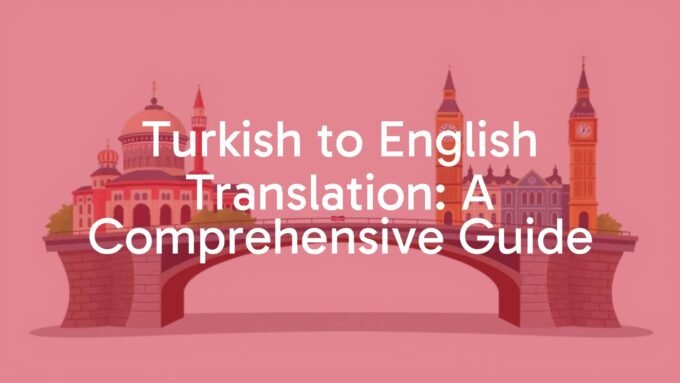A Henna Night in Turkey, called Kına Gecesi, is more than a pre-wedding party; it is a symbolic and emotional ritual, mostly for women, that marks a bride’s moving change from her childhood home to her new life as a wife. This old custom, full of meaning, mixes joy and sadness as the bride says goodbye to her family while celebrating her coming marriage. It’s a colorful night with traditional songs, dances, and the well-known use of henna, which stands for blessings, fertility, and fresh starts.
While some parts have changed over time, the main meaning of the Turkish Henna Night remains an important part of the wedding path, setting the emotional and cultural tone for what follows. It is a time for the community to come together, to share tears and laughter, and to strengthen family and community bonds.

What is a Henna Night in Turkey?
Simply put, a Henna Night in Turkey is a traditional pre-wedding ceremony, usually held one or two nights before the wedding. It is mainly for the bride and her female relatives and friends, though modern versions sometimes invite the groom for a short time. This gathering blends celebration and farewell as the bride gets ready to leave her family home and start a new chapter.
The name comes from the main ritual: putting henna on the bride’s hands, and sometimes her feet. It is more than decoration; it carries many meanings, from wishes for good luck and fertility to a sign that the bride is joining her new family and role. The mood mixes lively dancing and singing with emotional moments, especially when traditional sad songs are sung.
Origins and Historical Context
The exact origins of the Turkish Henna Night are not clear. Some say it goes back to old nomadic cultures. What is clear is that it has been a key part of Turkish wedding customs for centuries. It has changed over time but kept its main purpose. Henna itself has a long history in many cultures and is often linked to protection, blessings, and life milestones.
In Turkish stories and beliefs, henna often relates to ideas of giving and devotion. One tale links it to Prophet Abraham and a hennaed ram, seen as a deep offering. This story shows henna as a mark of commitment and a sign of being set apart for an important purpose-whether for faith, country, or, for a bride, her new family.
Role of Henna Night in Turkish Wedding Traditions
The Henna Night has an important place in the wider set of Turkish wedding customs and is an important step before the marriage. Turkish weddings often include several stages, starting with a proposal, then events like kız isteme (asking for the bride’s hand) and the nişan (engagement). The Henna Night is the second-to-last step, a close gathering that lets the bride look back and look ahead.
It acts as a bridge between maiden life and married life, a formal goodbye to single days. Unlike the larger and more formal wedding reception, the Henna Night is known for its deep feelings and personal meaning, creating lasting memories for the bride and her closest circle.
Importance of Henna in Turkish Culture
Henna comes from the dried, ground leaves of the henna plant and has many uses in Turkish culture beyond weddings. People believe it has healing uses, and it leaves a red color on skin or hair. Its cultural meaning runs deeper, standing for giving, devotion, and blessings.
People in Turkey use henna at three main times as a sign of giving: on animals before sacrifice, on soldiers-in-training offering themselves to their country, and on brides and grooms-to-be as they give themselves to their future families. While hennaing animals is less common today, its use for military candidates and marrying couples remains strong, showing its lasting power as a symbol.
Symbolism and Cultural Significance of Henna Nights
The Turkish Henna Night is a rich mix of symbols, and each part adds to its deep cultural meaning. Old beliefs blend with personal feelings, creating an unforgettable night for the bride and her loved ones. The rituals are not random; they are rooted in centuries of tradition and shared understanding.
From the color of the bride’s clothes to the tears that may fall, every detail speaks about change, fertility, and family bonds. It is a strong expression of cultural identity and continuity.
What Does Henna Symbolize in Turkish Weddings?
In Turkish weddings, henna is full of meaning. First, putting it on the bride’s hands and feet is believed to connect her with the earth’s fertility and plenty. It shows she is ready to be a wife and mother, to have children, and to continue the family line. The red color of henna is also linked to love and belonging, tying it to happiness in marriage and commitment.
The rituals around henna, such as the mother-in-law placing a gold coin in the bride’s palm, are said to bring good luck and wealth to the couple. Accepting henna also shows the bride’s acceptance of her groom and her place in his family, marking a key moment of change and commitment.

Differences from Other Wedding Traditions in Turkey
All Turkish wedding customs celebrate a union, but the Henna Night stands out because of its focus and feeling. Unlike the engagement party (nişan) or the main reception, which are larger and mixed-gender, the traditional Henna Night is usually an intimate event mainly for women. This allows a different kind of bonding and emotional sharing.
The sad undertone during the henna ceremony also sets it apart. The singing of sad songs and the tears shed by the bride and her mother do not appear in other wedding events. This shows the bittersweet side of the bride leaving her childhood home, a feeling less stressed on the joyful wedding day. The strong focus on traditional clothes, set folk songs, and the symbolic henna also make it a distinct and loved ritual in Turkish weddings.
What Happens During a Turkish Henna Night?
A Turkish Henna Night is a well-planned event, full of rituals and traditions that happen through the evening. There are regional differences, but a common flow makes it a memorable time for all. The night balances lively celebration with quiet, meaningful moments.
The mood moves from happy excitement to a quieter, thoughtful tone during the henna ritual, then back to festive dancing. This flow means every side of the bride’s change is noticed and celebrated.
Common Rituals and Symbolic Acts
The evening usually starts as guests arrive and the fun builds. In some places, a flag is hung outside the bride’s home to show the wedding is starting. As the night goes on, key rituals take place. The bride, often in special clothes, makes a grand entrance, sometimes with dancers and music. The main part is the henna ceremony, often led by a short procession.
Another act in some regions is “testi kırmak“-breaking a clay pot filled with money, candy, and chocolate. The bride breaks it, sometimes after dancing around the groom, to wish lifelong happiness for the new family. These are not just shows; they are long-held practices believed to bring blessings and good luck.
- Flag hung to mark the start of wedding days (regional)
- Procession and the bride’s entrance with music
- Candle walk by single women around the seated bride
- Singing of a sad farewell song
- Gold coin in the bride’s palm, then henna application
- Hands wrapped with red cloth for a lasting stain
- Optional henna on the groom’s little finger
- “Testi kırmak” (breaking the pot) in some areas
Henna Application Ritual: Meaning and Steps
The henna ritual is the core of Kına Gecesi. The lights dim, and the bride, covered with a red veil, sits in the center while women form a circle. Single young women carry candles and walk around her, creating a calm, thoughtful scene. The traditional song “Yüksek yüksek tepeler” plays, telling a moving story of a daughter leaving home, and it often brings tears to the bride and her mother.
An elder-often the mother-in-law-applies the henna. Before that, she puts a gold coin in the bride’s palm, a gesture said to bring good luck. The bride keeps her fist closed until she gets the coin. After the henna is placed, her hands are wrapped in a red cloth or a decorated handkerchief for several hours, or overnight, so it leaves a dark, lasting stain that symbolizes strong love and commitment. In some families, the groom also gets a small touch of henna on his little finger.
Traditional Songs, Dances, and Music
Music and dance are central to a Henna Night and shape its feel. Early on, lively oriental music gets guests dancing. The bride may enter with female dancers, setting a festive tone. During the henna moment, the mood shifts with “Yüksek yüksek tepeler,” a standard folk song whose words about leaving home bring emotion and mark the bride’s farewell to her past.
After the henna ritual, the mood lifts again, and dancing starts with energy. Folk dances like halay and horon are common. In halay, people hold hands or shoulders and move in a circle or line with steps that start slow and get faster. These dances show shared joy and bring guests together.
What Do Guests Expect at a Henna Night?
Guests can expect a night full of culture, deep feeling, and lively fun. At first, there is music, dancing, and chatting. Dried fruits and juices are common refreshments. Guests watch the moving henna ritual, a highlight of the night, and some may join the candle walk around the bride.
After the henna moment, the party goes on with more dancing and singing. Close friends and family bond, share stories, and give their blessings. At the end, guests often receive small gifts like henna-themed cookies, hair accessories, candles, or sweets as a thank-you and keepsake. While it was once women-only, many modern Henna Nights invite the groom and a few male guests for part of the evening.
Traditional Attire, Decorations, and Foods at Henna Nights
The sights, sounds, and tastes of a Turkish Henna Night matter as much as the rituals. From the bride’s bright dress to the careful decorations and traditional treats, each detail adds to the special feel of the evening. These choices add to the party mood and carry meaning, too, reinforcing the cultural weight of the event.
The choice of colors-especially red-and how food and gifts are presented all help create a complete and memorable experience for the bride and her guests.
Popular Dresses and Accessories Worn
The bride is the star of the Henna Night, and her outfit shows it. She often wears a bold red dress, a color tied to love, belonging, and sometimes sacrifice. Many brides add a traditional velvet cloak with fine gold embroidery called a “bindallı.” This gown is a signature of the Henna Night and can come in many colors, though red is most loved. Some brides also choose hair pieces like tiaras to finish the look.
During the henna ritual, a red veil covers the bride’s head, highlighting the color’s meaning and adding a touch of mystery and seriousness to the moment. Guests usually wear festive clothes. You may see a wide range-from headscarves and long sleeves to modern dresses-showing easy acceptance of different styles during the celebration.

Decor Themes and Setup
Henna Night decor aims for a warm, welcoming, and festive feel, often with a Turkish touch. Themes vary, but items that show cultural roots are common. The venue-home, garden, or hall-is often decorated with colorful fabrics, lights, and flowers.
The center of the setup is the area for the henna ritual, with a special chair for the bride. The henna sits on a tray, often with candles, adding to the ceremony feel. Candles and handkerchiefs are prepared for guests who join the walk around the bride. The overall look is festive yet elegant and traditional, making a beautiful backdrop for an emotional night.
Typical Foods and Treats Served
Henna Nights usually do not have big multi-course meals. Instead, they offer light snacks that are easy to enjoy while mingling and dancing. Expect dried fruits, nuts, and simple drinks like tea or fruit juice.
- Dried fruits: apricots, figs, raisins
- Assorted nuts
- Turkish tea, fruit juices, and water
- Small sweets or cookies
The focus is on a friendly mood where guests can talk and snack. Later, after henna pouches are given out, these treats become part of the casual celebration. It may not be a feast, but it reflects Turkish hospitality and fits the night well.
Modern Adaptations and Regional Variations
Like any living tradition, the Turkish Henna Night has not stayed the same. Its main idea stays, but it has adapted to modern life and local habits. This give-and-take between keeping old ways and trying new ones keeps the tradition alive and loved by new generations.
Knowing these differences helps people value the wide variety inside Turkish culture and see how traditions can change without losing their core meaning.
Urban vs. Rural Henna Night Practices
Henna Night practices show clear differences between city and village life. In more traditional rural areas, the event is often held at the bride’s family home and follows old customs closely. These nights are more intimate, focused on the community, and strong in the emotional farewell side.
In cities, the core rituals stay, but there is more flexibility and a mix of old and new. City Henna Nights may be in hotel ballrooms with larger guest lists. The “party” feel can be stronger, with professional entertainment and modern music alongside folk songs. The groom and his friends may join for part of the night, showing a more open approach than the strict women-only gatherings of the past.

| Feature | Rural | Urban |
|---|---|---|
| Venue | Family home or yard | Halls, hotels, large venues |
| Guest size | Smaller, close community | Larger, extended network |
| Ritual style | Strictly traditional | Traditional with modern touches |
| Groom’s presence | Usually absent | Often joins for part |
| Music | Mainly folk | Mix of folk and popular |
Influence of Contemporary Culture
Modern life has clearly shaped the Turkish Henna Night. While henna and emotional songs remain central, new ideas have been added. Some events include parts similar to Western bachelorette parties, though still family-friendly. Social media also plays a role, as sharing photos can lead to bigger setups and photo-friendly looks.
Outfits may blend styles: a modern red evening dress first, then a bindallı. Music often mixes folk with current Turkish hits. Even with these updates, the purpose stays the same-to honor the bride’s change and build emotional closeness-showing the tradition’s strength and flexibility.
How to Participate or Organize a Henna Night in Turkey
Whether you are a guest or a bride-to-be planning your own night, knowing the etiquette and basics of a Turkish Henna Night can really improve the experience. This tradition is personal and communal, and learning how to handle it with respect helps make the night smooth and meaningful.
From what to expect as a guest to planning tips, the notes below will help you join this beautiful custom with confidence and respect.
Tips for Foreigners Attending Henna Nights
For visitors, the most important thing is to join with an open mind and heart. Dress respectfully-festive but modest-especially in a traditional setting. Styles vary among Turkish women, so watch others and follow along. Be ready for both joy and emotion; tears are normal during “Yüksek yüksek tepeler.”
Do join the dancing, especially the halay. The steps are simple and easy to learn, and joining shows respect and helps you enjoy the culture. If someone offers henna, you can accept or politely refuse; a small spot on the palm is a nice way to take part. Remember, it is a family celebration filled with warmth and welcome.
Advice for Planning Your Own Event
If you are planning a Henna Night in Turkey, good planning matters. Choose the venue early; many use the bride’s home, but halls are popular in cities. Choose your guest list with care. Traditionally it is women-only for close friends and family, but you may invite the groom for a set part. Gather what you need: henna, candles, fabrics for decor, and small henna pouches to give as gifts.
Work with family members, especially elders, to make sure all rituals are done the usual way-from the procession to the gold coin. Pick music that mixes folk songs with modern tracks for dancing. Think about hiring a photographer or videographer to capture key moments, especially the henna scene. Above all, allow the night’s ups and downs-both the joy and the moving goodbyes that make a Henna Night special.
Frequently Asked Questions about Turkish Henna Nights
The Turkish Henna Night is a rich tradition, and many people have questions about it. Here are answers to common questions that explain the details and meaning behind this pre-wedding ceremony.
Why is the event called ‘Kına Gecesi’?
It is called ‘Kına Gecesi‘ or ‘Henna Night’ because the main ritual is placing henna (kına) on the bride’s hands and sometimes feet. This act is more than decoration; it stands for blessings, fertility, good luck, and the bride’s commitment to her new family. The name reflects the focus and spirit of the celebration.
Is henna night only for women?
Traditionally, the Turkish Henna Night was a women-only gathering, a private time for the bride, her female relatives, and close friends to share both sorrow and joy as she prepares for married life. In modern times, especially in cities, the groom and some male family members or friends may join for part of the night-often after the henna is placed-for dancing and more fun. Even so, the henna ritual itself usually remains centered on women.
How do Turkish henna nights compare to similar rituals in other cultures?
Turkish Henna Nights share features with pre-wedding henna rituals in the Middle East, North Africa, and South Asia. In these regions, henna is used for celebrations, especially weddings, and stands for blessings, beauty, and good luck. Applying henna to the bride’s hands and feet, along with music, dance, and women’s gatherings, is a common thread.
But Turkish Henna Nights have their own style. Unlike the very detailed designs often seen in Indian or Pakistani henna art, Turkish henna is usually simpler, often a dollop in the palm. The strong emotion-especially singing songs like “Yüksek yüksek tepeler” and the focus on the bride’s farewell to her family-is a very clear and unique part of the Turkish custom. While similar events exist elsewhere, the set rituals, emotional depth, and cultural details make Kına Gecesi distinct and deeply valued.














Leave a comment